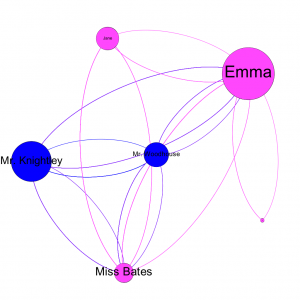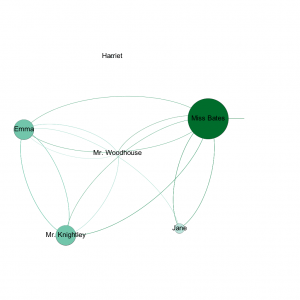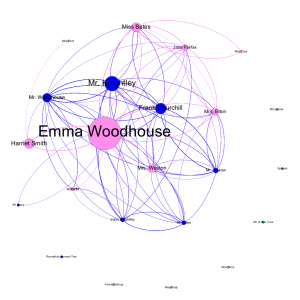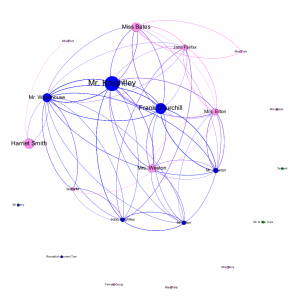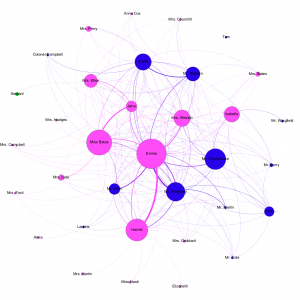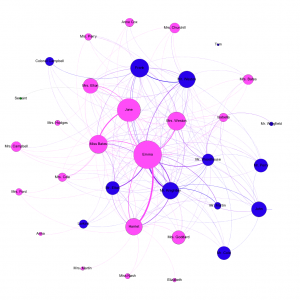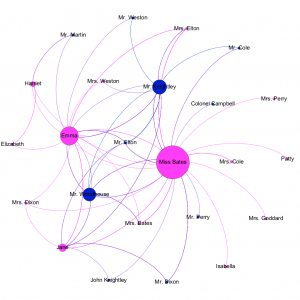
Manually determining the character about whom other characters were talking proved to be a difficult and interesting task. Mr. Woodhouse’s role in the conversation is particularly notable. He almost never directly addresses the conversation, instead making observations such as, “Once, I felt the fire rather too much; but then I moved my chair a little, a very little, and it did not disturb me” (134). Emma and Mr. Knightley are far more focused on the conversation at hand, while Mr. Woodhouse is far more likely to follow his own train of thought and provide only tangentially relevant observations. This is evident in the graph, as Mr. Woodhouse’s network only includes the characters in the room, revealing his inability to engage in the wider conversation. This characteristic is only evident on this small-scale graph. Because the community of the novel is so small, Mr. Woodhouse’s is about the same as anyone else’s on the scale of the full novel.
Also notable in this chapter is the method by which the news of Mr. Elton’s engagement gets to Emma. Mr. Elton has sent a letter to the Coles; Mr. Cole shares this letter with Mr. Knightley; and Mrs. Cole shares the information with Miss Bates. Both Mr. Knightley and Miss Bates arrive at Hartfield to share the news with Mr. Woodhouse and Emma. Mr. Knightley hints at the news, and I recorded this as talking “about” Mr. and Mrs. Elton, if not explicitly. Miss Bates seems upset to hear that Mr. Knightley has heard this news before her – “Where could you possibly hear it, Mr. Knightley? For it is not five minutes since I received Mrs. Cole’s note” (136). Miss Bates’s role is that of the town gossip, and she knows that her ability to spread information is her greatest social capital.
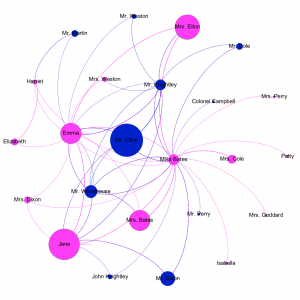
You can see the characters’ various roles displayed in the graph. Miss Bates’s network, of course, has the furthest spread, as she routinely mentions five or ten characters in her long-winded passages. Removing her from the network results in 56.03% edge visibility; approximately half of the graph relies on her, unsurprisingly. Mr. Knightley, on the other hand, has a more contained reach. He is focused on the people in the room and on Mr. and Mrs. Elton, the primary subject of conversation. As a wealthy man, Mr. Knightley does not need to engage quite as fully in the network of gossip as Miss Bates does in order to hold social importance. Emma’s network is more wide-ranging than Mr. Knightley’s but less so than Miss Bates’s. Surprisingly, removing Mr. and Mrs. Elton from the graph results in a 75.86% visibility of edges, so the network largely stays intact even without any gossip about their marriage. This is likely because the chapter opens with some conversation about other topics, and Miss Bates also mentions a variety of other characters in her gossip about the Eltons, so there is plenty of surrounding gossip to maintain the structure of the network. This would seem to suggest that although Mr. Elton’s engagement is significant to the community insofar as it removes one eligible bachelor, the gossip of the town can and will continue regardless.
